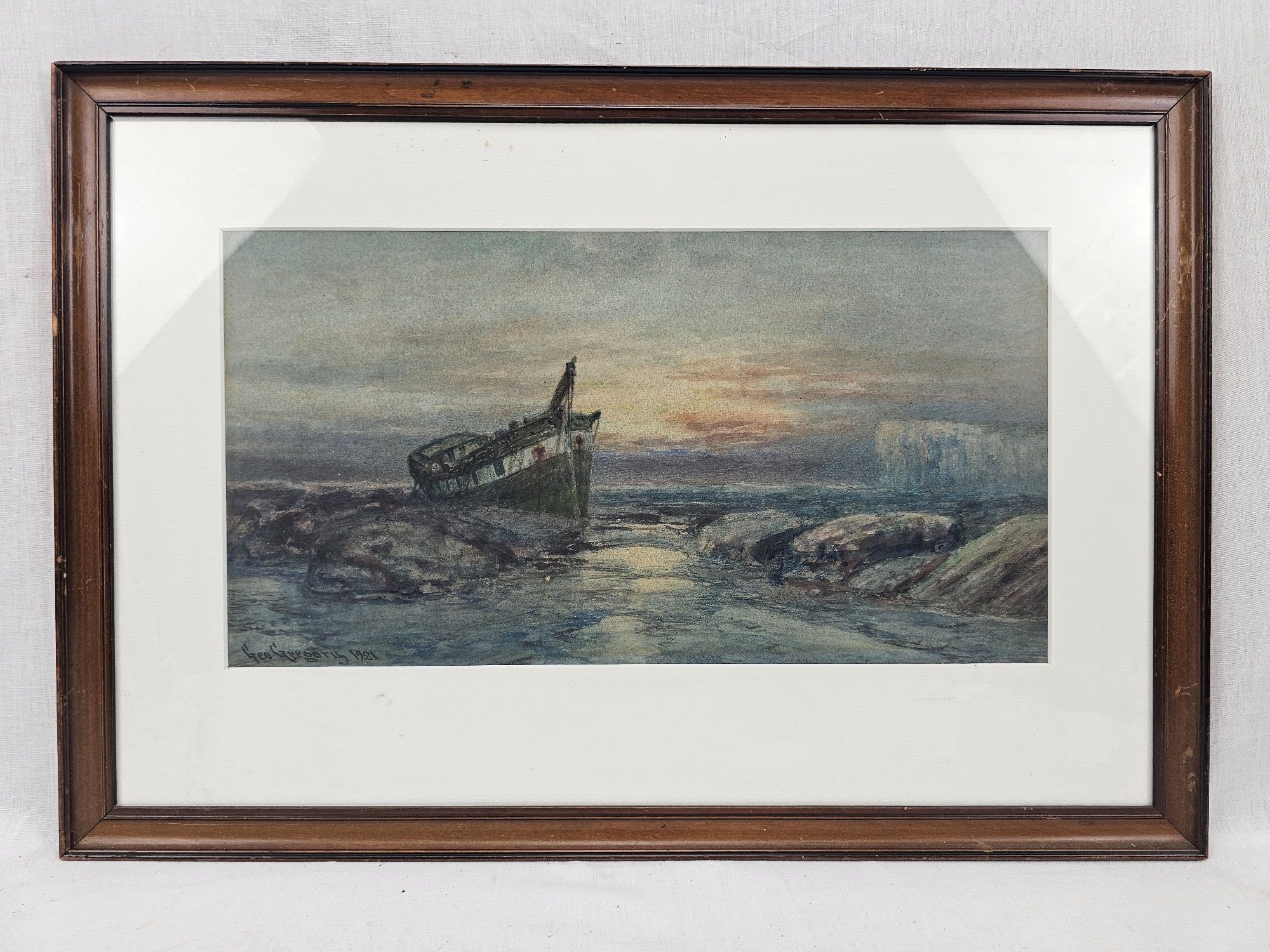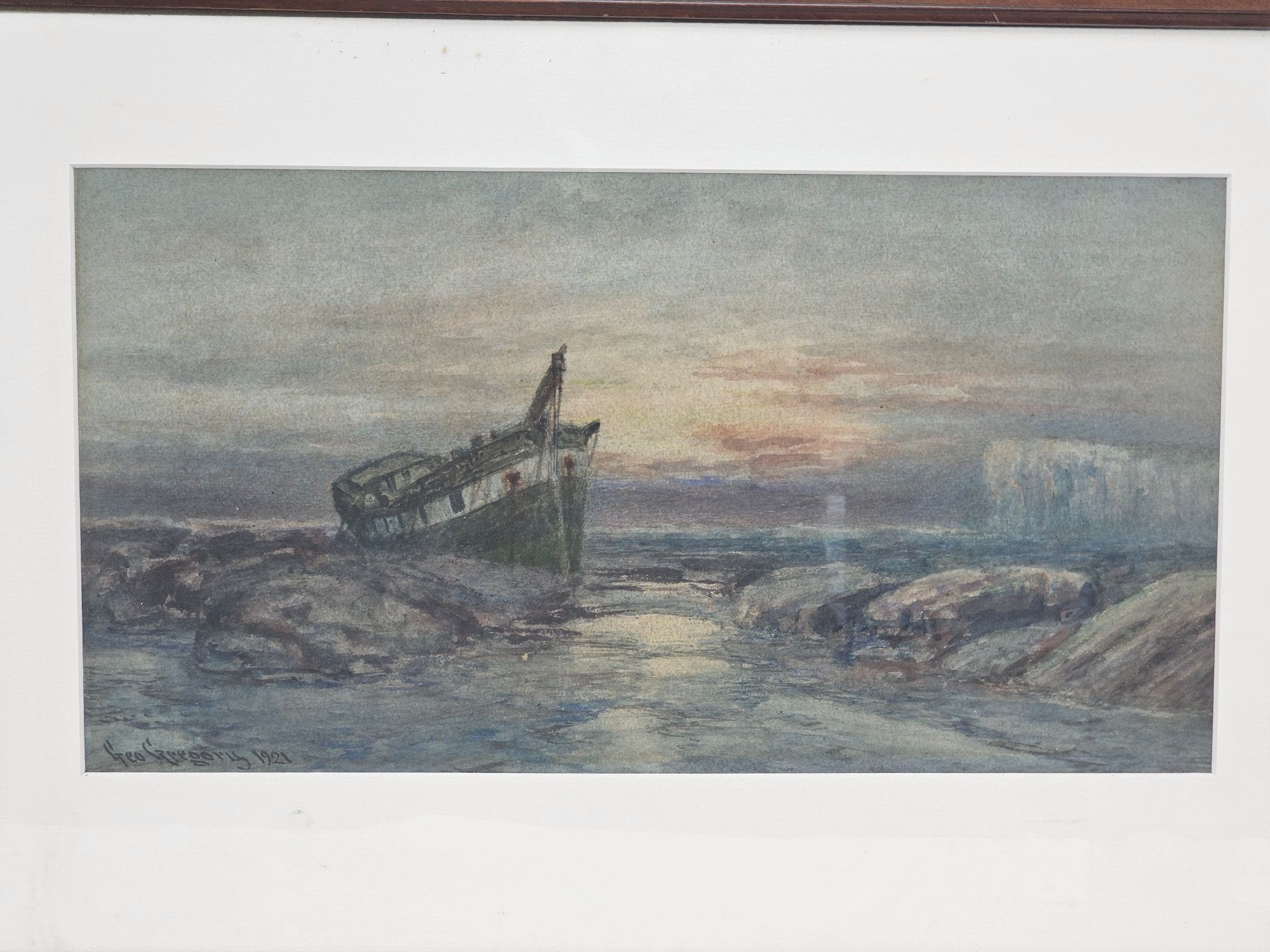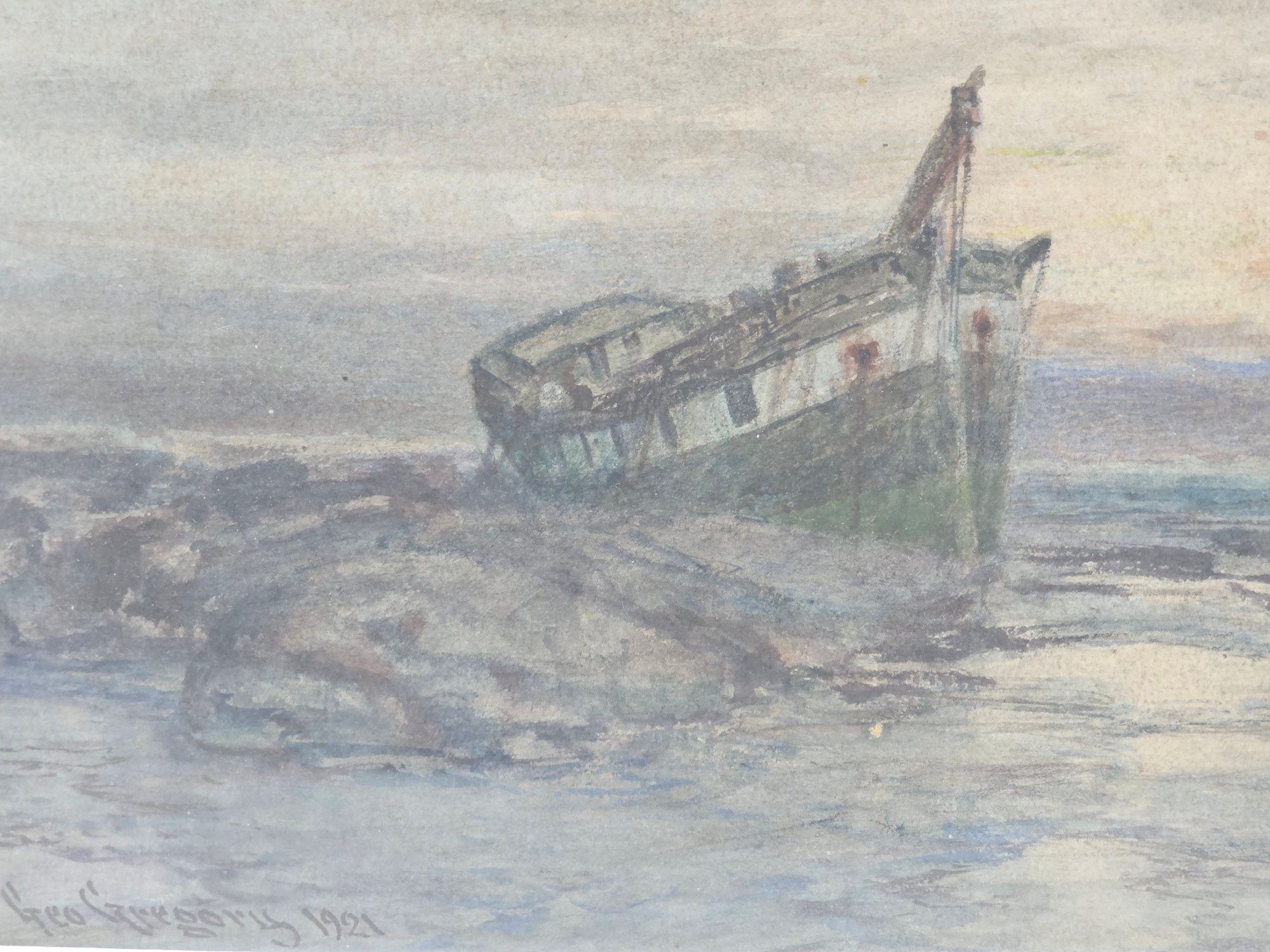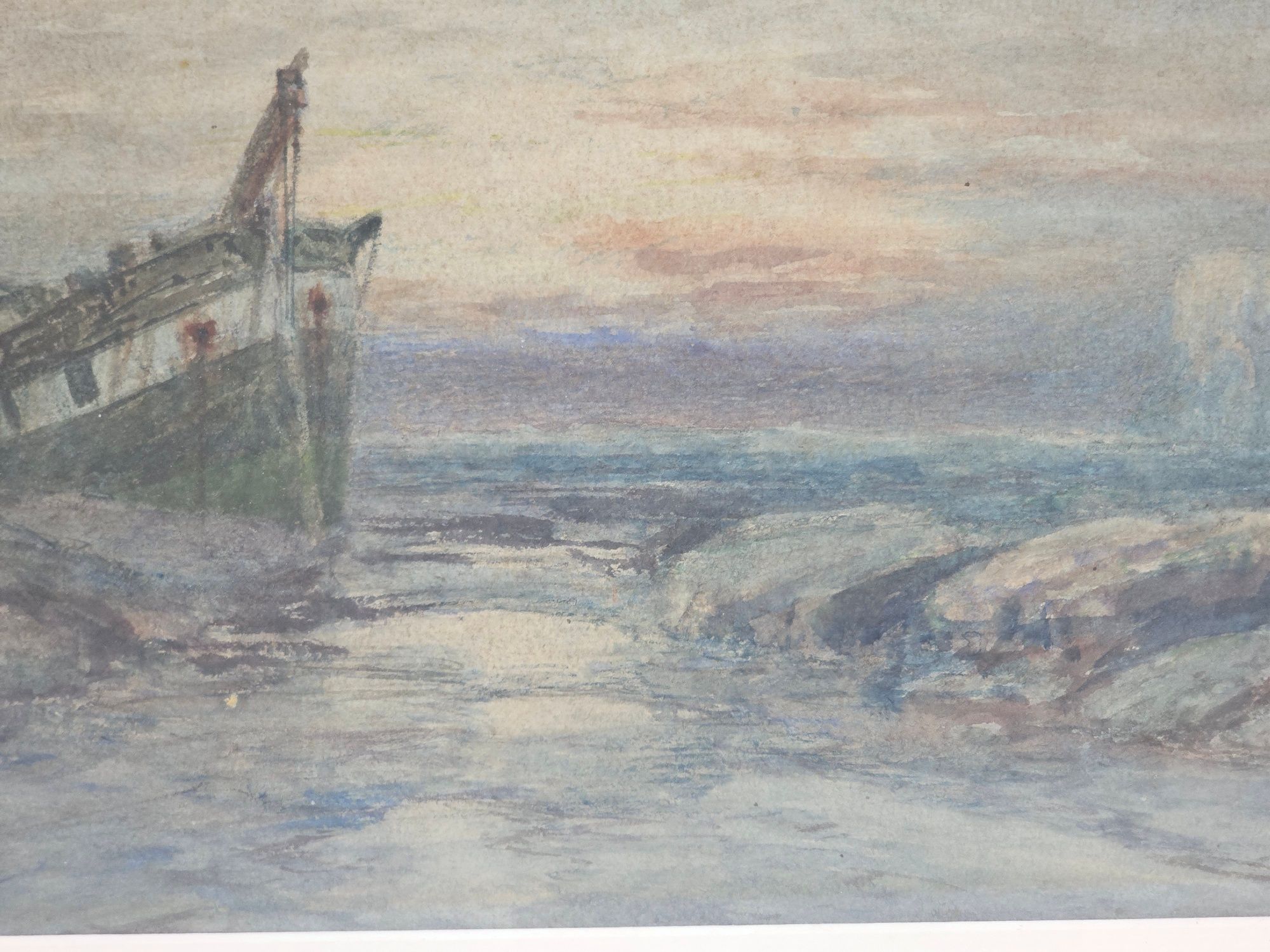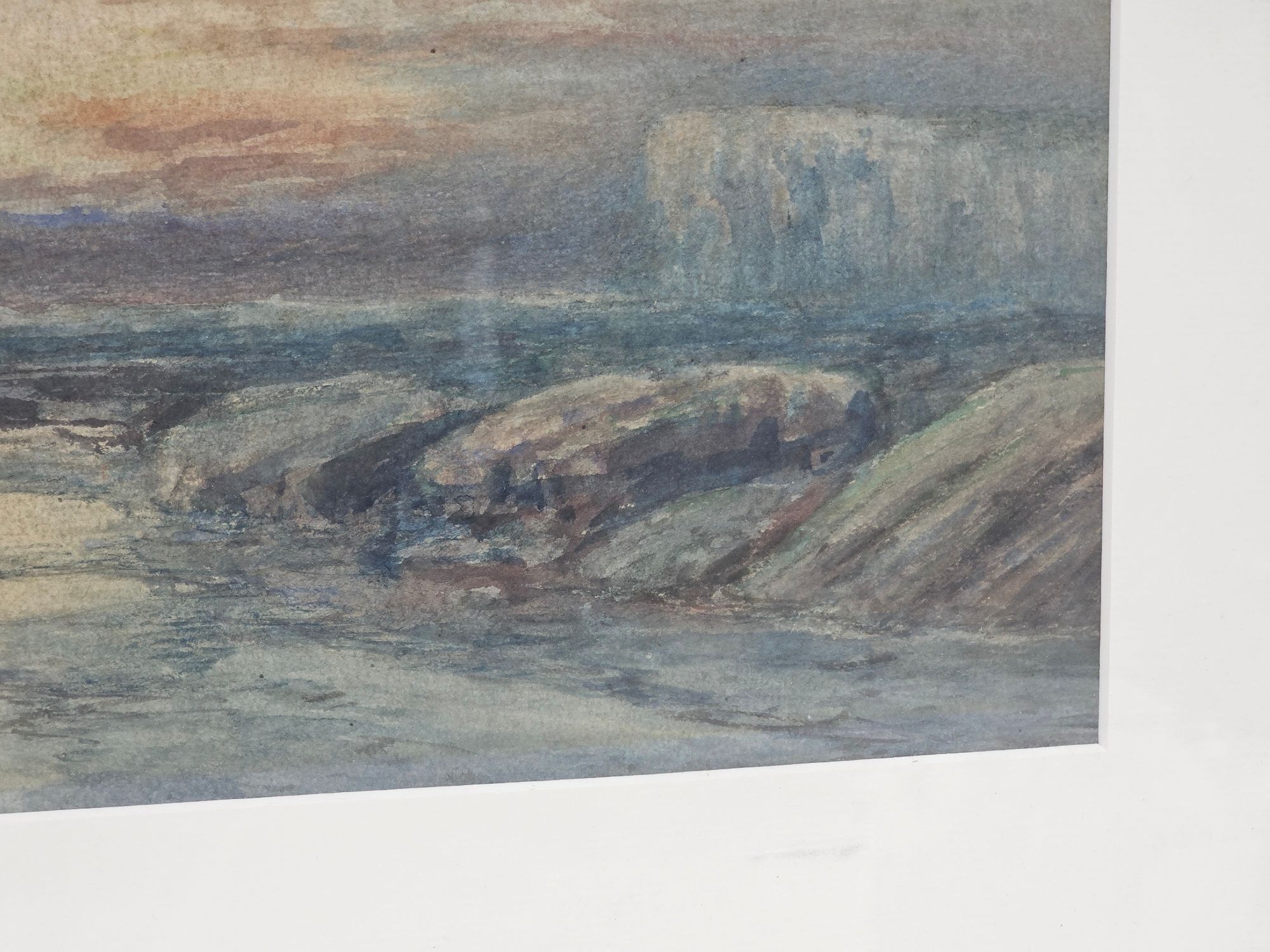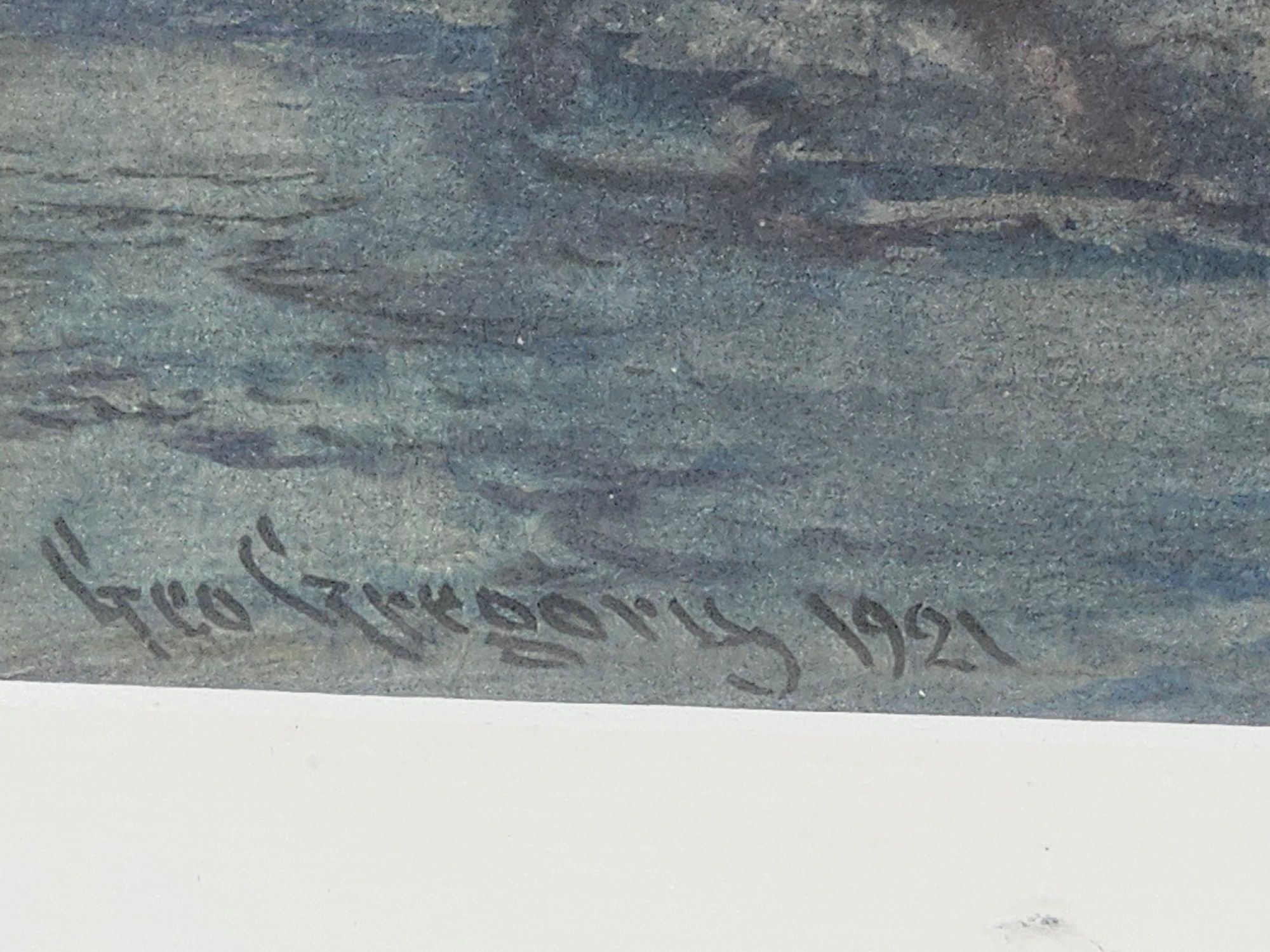~ Watercolour of A Beached Ship by Isle of Wight Artist George Gregory (1849-1938) ~
George Gregory (1849–1938) was an English artist known primarily for his landscape paintings, which captured the serene beauty of the English countryside. His work reflects the traditions of 19th-century British landscape art, marked by a love for natural scenery, and a mastery of light and color.
He offers a window into the beauty of the English countryside during the late Victorian Era and beyond. His paintings evidentiate through their realism and attention to detail. Though he did not achieve widespread fame, his work remains appreciated for its artistic quality and its portrayal of a timeless natural world.
*Biography of George Gregory*
*Early Life and Education*
Born: George Gregory was born in 1849 in England. The details of his early life, including his family background and education, are not extensively documented, which is not uncommon for many artists of the time who were not part of the major art movements.
Artistic Training: While specific records of his training are scarce, Gregory likely received his art education during the mid-to-late 19th century, a period when formal art education in England was becoming more structured with institutions like the Royal Academy of Arts playing a key role.
*Artistic Career*
Landscape Painting: Gregory specialized in landscape painting, a genre that was highly popular in Victorian England. His works often depicted rural scenes, rivers, and pastoral settings, emphasizing the tranquility and natural beauty of the English countryside.
Style and Technique: Gregory’s painting style was characterized by a realistic approach, with a strong emphasis on light, atmosphere, and the subtleties of nature. His work shows the influence of earlier landscape artists such as John Constable and J.M.W. Turner, although Gregory’s style remained more conservative and closely aligned with the traditional, picturesque approach.
Exhibitions: While not widely recorded, it is likely that Gregory exhibited his works in regional galleries and possibly in London, where many artists sought to display their work to collectors and the public. During this period, landscape painting was highly regarded, and artists like Gregory found a ready market for their work among the middle and upper classes who valued depictions of the countryside.
Later Life and Legacy
Continued Work: Gregory continued to paint throughout his life, maintaining his focus on landscapes. As he grew older, his work may have become more reflective, capturing the changing moods of the English landscape across different seasons and times of day.
Death: George Gregory passed away in 1938 at the age of 89. By the time of his death, the art world had changed significantly, with modernism and abstract art coming to the fore. However, Gregory remained true to his style, contributing to the preservation of the traditional English landscape genre.
Legacy: While George Gregory may not be as well-known as some of his contemporaries, his work represents a continuation of the English landscape tradition into the 20th century. His paintings are appreciated for their technical skill and their ability to evoke the peaceful, idyllic nature of rural England.
Artistic Contributions
Landscape Art: Gregory’s work is emblematic of the enduring appeal of landscape painting in England. His ability to capture the essence of the countryside, with its changing light and seasons, makes his work a valuable record of the natural world as it was experienced in his time.
Representation in Collections: Although not a household name, Gregory’s works may be found in private collections and regional galleries, particularly those with an interest in 19th-century British art.


